
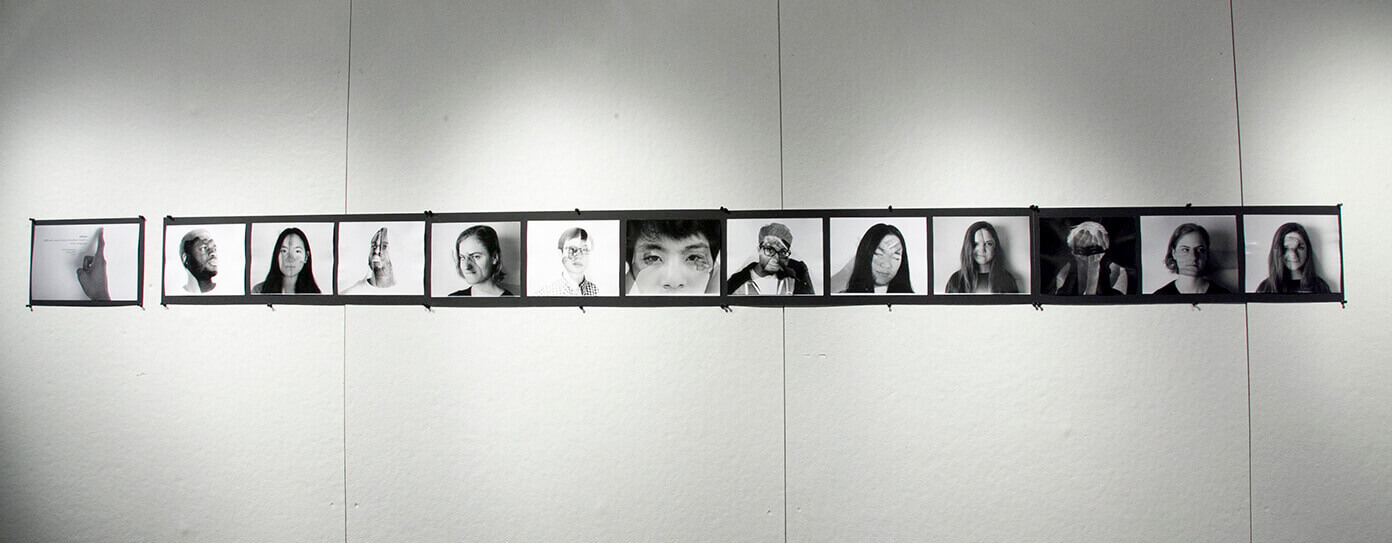
The image above is from my critique, with images I independently produced (all images on this page were independently made). I chose to center my final project in the film photography course I took to be about body language, and expressions that display vulnerability, power and sadness. Film photography is interesting for the way it inverts - dark areas appear transparent on film while bright areas are opaque. When one projects light through a film strip to expose an image, bright areas are shielded from the light while the transparent film lets dark areas receive more light. I played with the inversions that film creates to plan my photographs. With each portrait in the series, is a paired gesture. I tried to incorporate different methods of overlaying and different chemical development methods in creating these. Here are some examples -
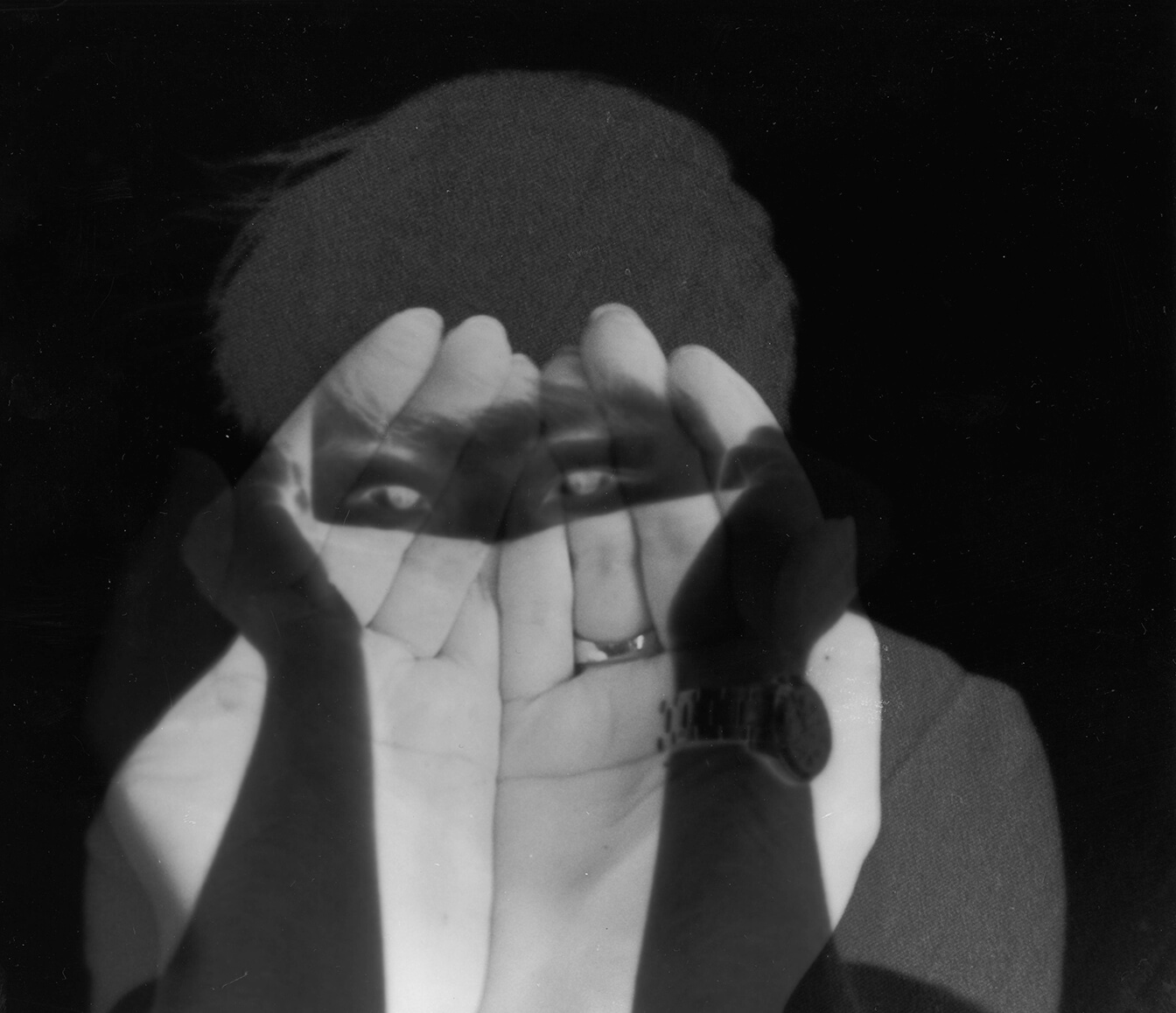
The image to the left was made in a series of steps - first, I developed the positive of the base photograph, then laid it over a sheet of photo paper and exposed the overlay. This let me develop the negative of that image. After testing this process, I created a negative and exposed the positive of a different image on top of it to get the final result. Deciding where to map dark and light shades makes this process very intentional - I planned each photograph in this series (below) to evoke different emotions. Here, it is vulnerability.
Multiple exposures,
Film,
2016

Made by exposing two positive images over each other with a perfect overlay
Oppression
Multiple exposures,
Film,
2016
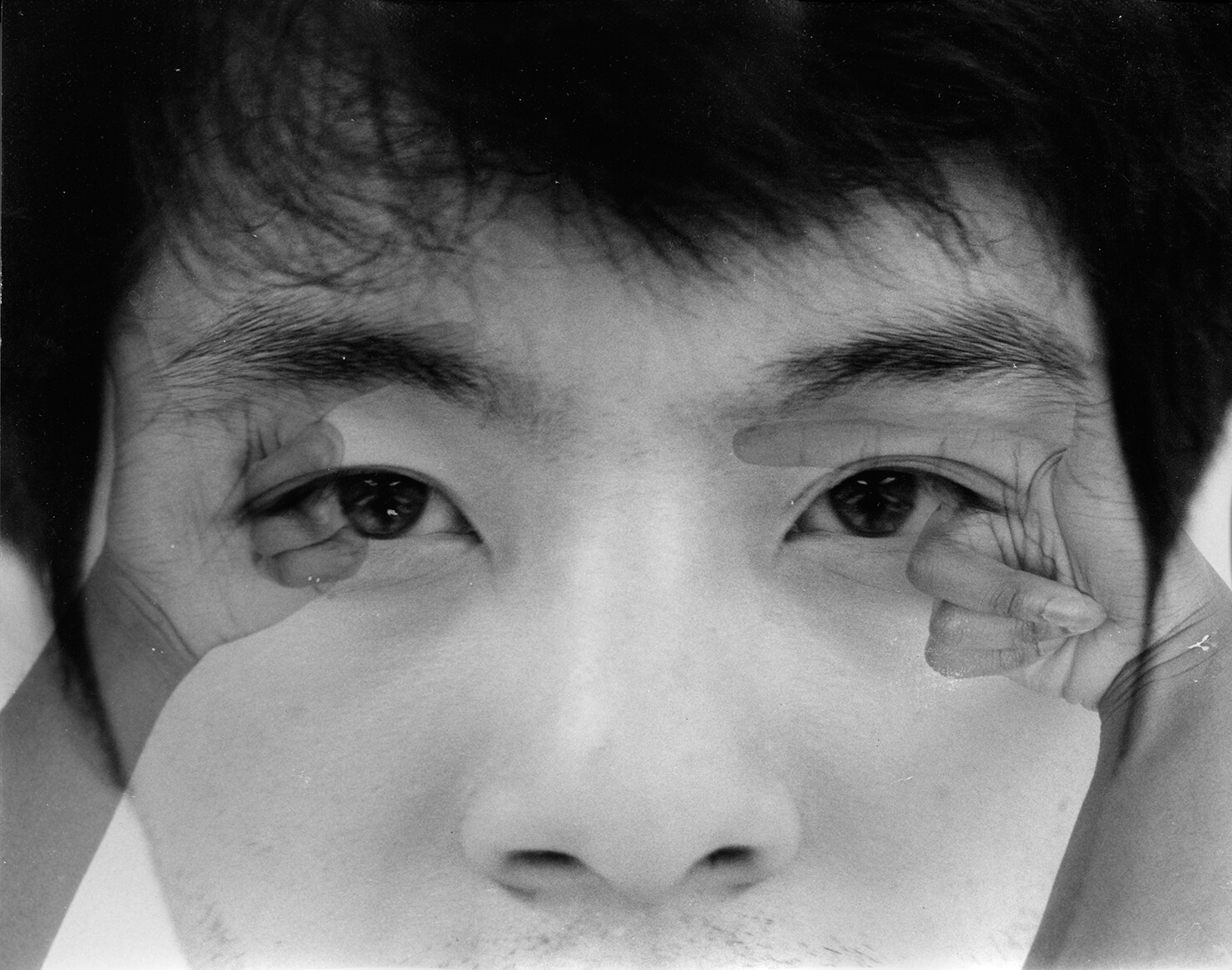
Made by exposing multiple images on the paper
Inner Conflict
Multiple exposures,
Film,
2016
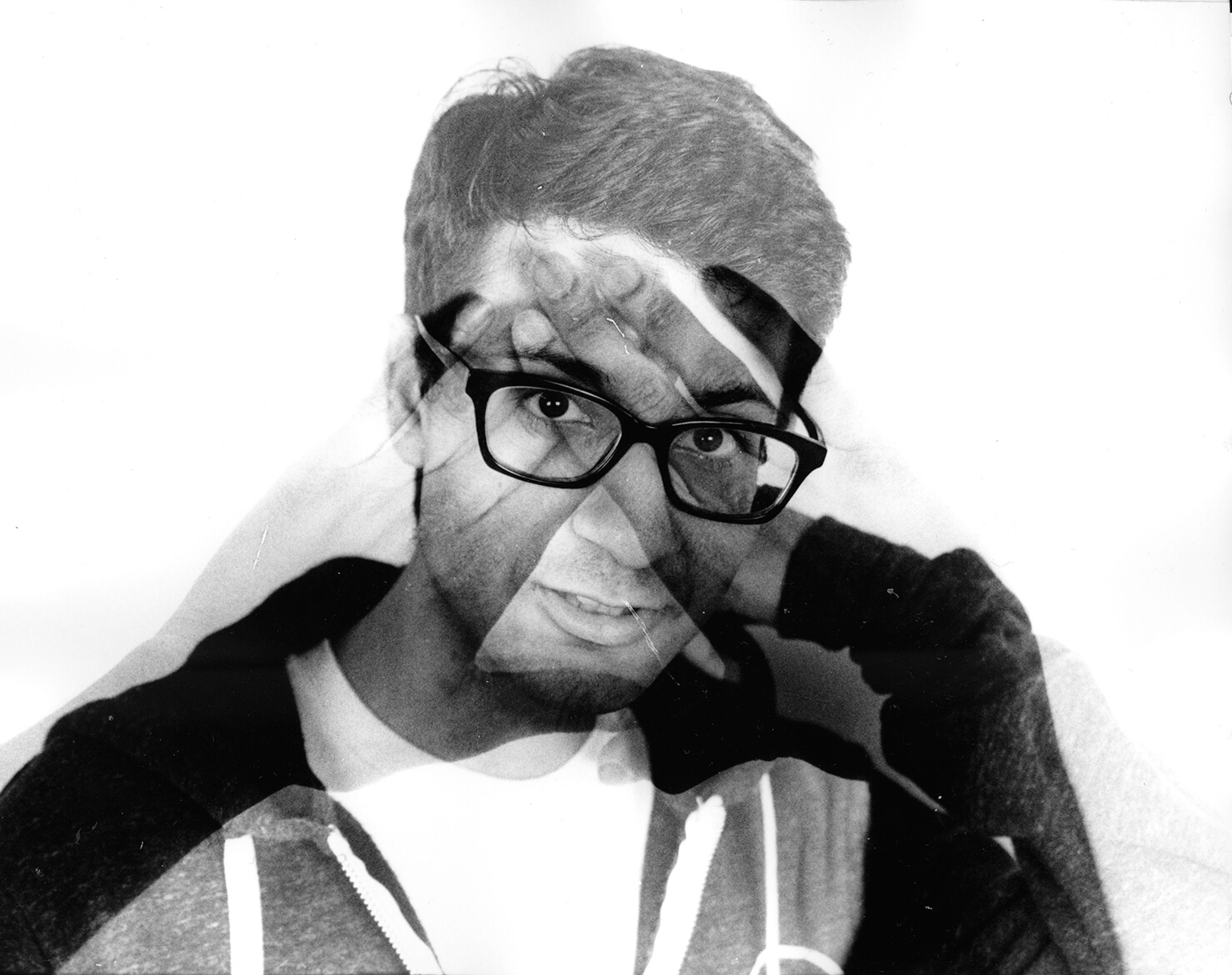
Made by overlaying two film strips and then exposing them together. This method is interesting because the light areas that are opaque on film will accumulate from both film strips but the negative areas cannot contribute - since they are transparent, overlaying a dark section of film from one strip with a light area from another will result in a light tone since the opaque from the light film will dominate. I planned these photographs with that knowledge to place the light and dark sections with a reasonable balance.
You can see that dark areas (hair and shadows) appear lighter, since the image of the hands has a white background in the same places. However, where the two images overlap and both contain darker content, it appears visibly much more exposed (eyes, glasses).
Confidence
Multiple exposures,
Film,
2016
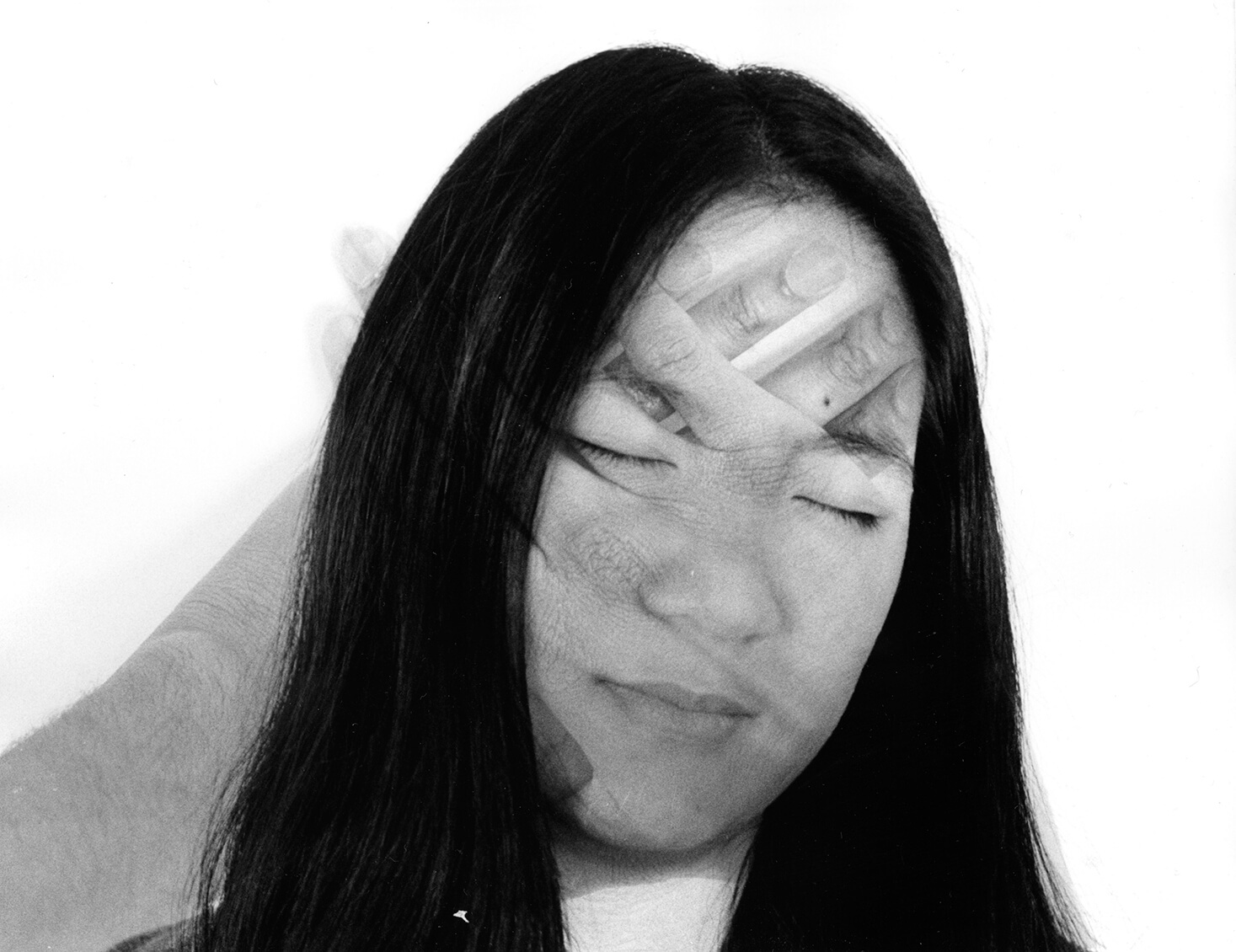
Made by exposing multiple images on the paper
Fear
Multiple exposures,
Film,
2016
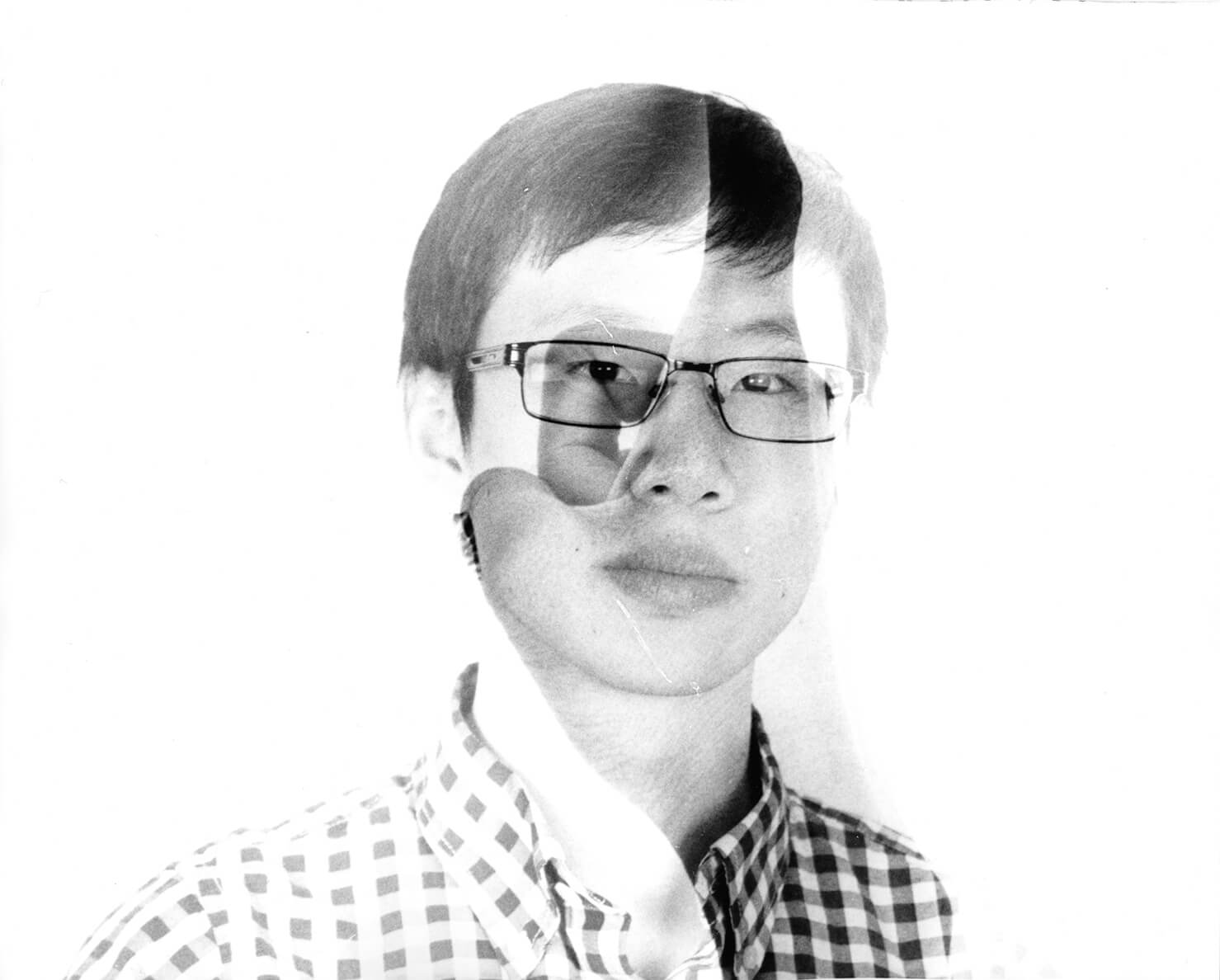
Made by overlaying two film strips and then exposing them together
Discipline
Multiple exposures,
Film,
2016

Made by overlaying two film strips and then exposing them together
Power
Multiple exposures,
Film,
2016
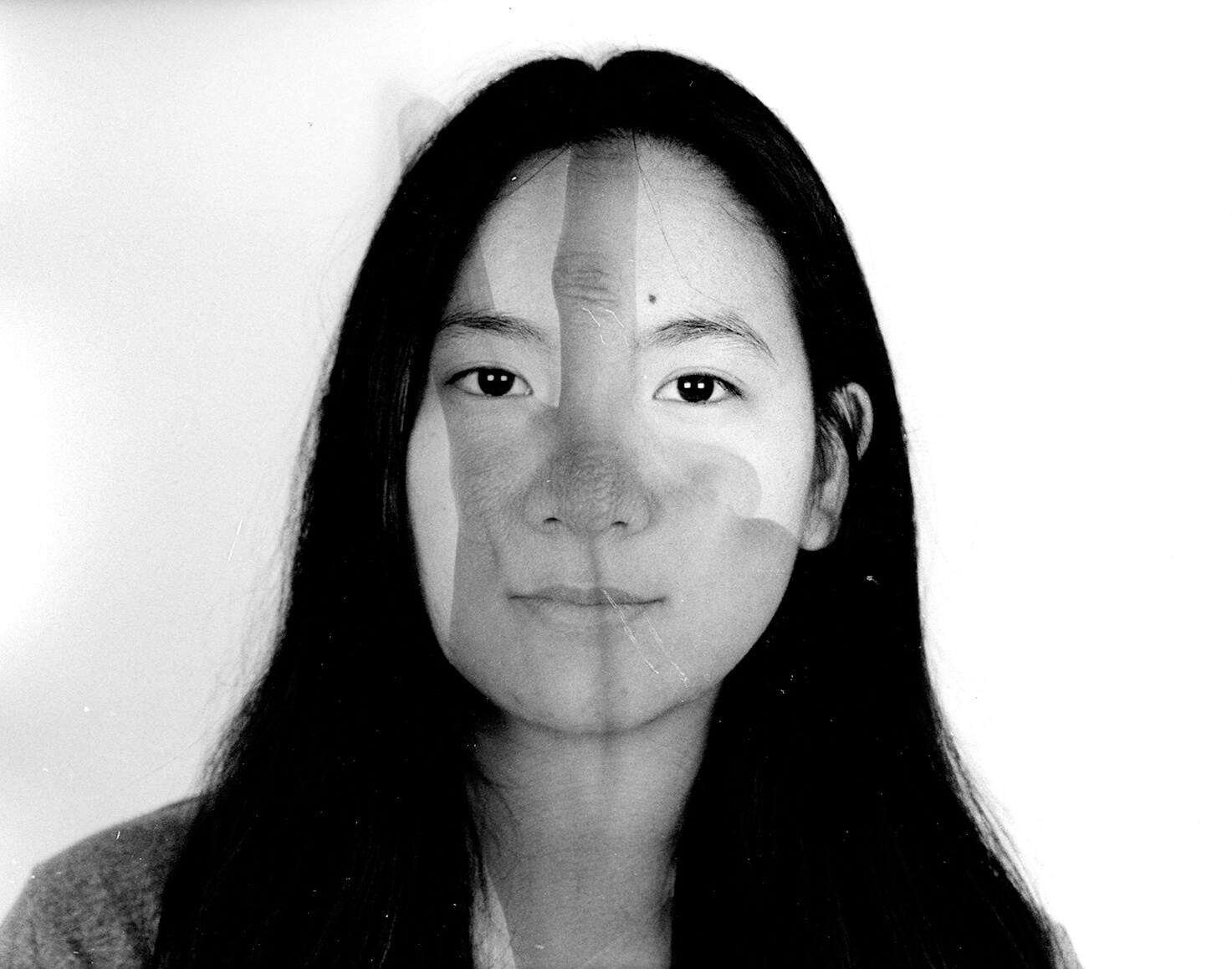
Oppression
Multiple exposures,
Film,
2016



I overlaid two images on film of graffiti and window washers - capturing these images was for me, what made shooting most worthwhile. People tend to act differently while on camera, and it's a wonderful device to start conversations. These window washers noticed I was taking pictures and began to pose for me and made the experience of shooting so exciting! These two images contrast each other so well.
Plight of the Window-washers
Made by exposing two film strips simultaneously,
Film,
2016

I really like the work of Gregory Crewdson and Man Ray for it's surrealism and roots in reality. I think film is an interesting way to explore surrealism - film does not give you instant feedback and there is uncertainty in the power of your images until you finally see them in front of you. Manipulation is hard to execute well in the dark room, and felt vastly different than working on Photoshop like I was used to.
Legs
Multiple exposures, Solarized
Film,
2016
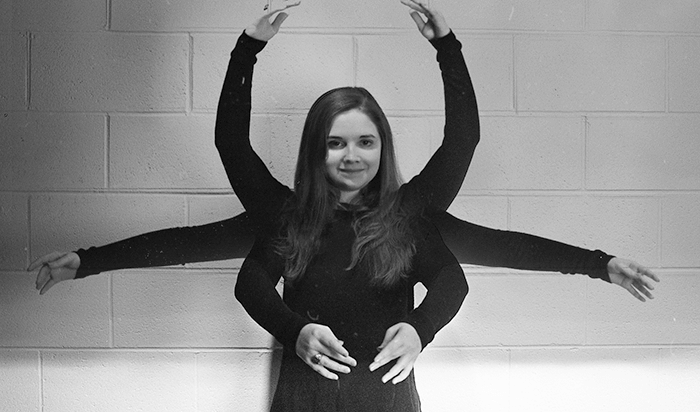
Not pictured - several test strips and attempts to blend these 3 photos well
Arms
Multiple exposures, Solarized
Film,
2016
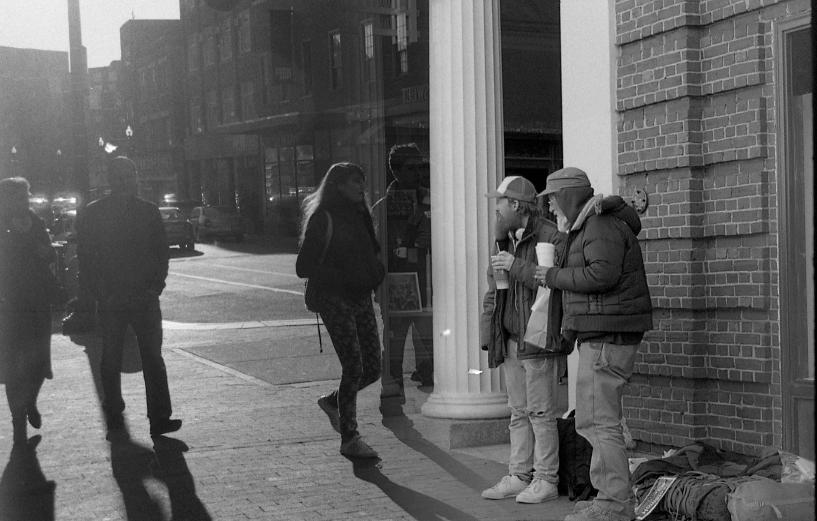
I blended perspective from two scenes across the street from each other. I wanted to create a conversation between two groups of people - the passerbys and the homeless. In my final result, I blended the perspective from two entirely different images and created a narrative that would force them to confront each other. I like that they face each other and that this image seems almost natural, without the blending artifacts of the columns to remind the viewer that this is only constructed.
Conversation
Multiple exposures,
Film,
2016
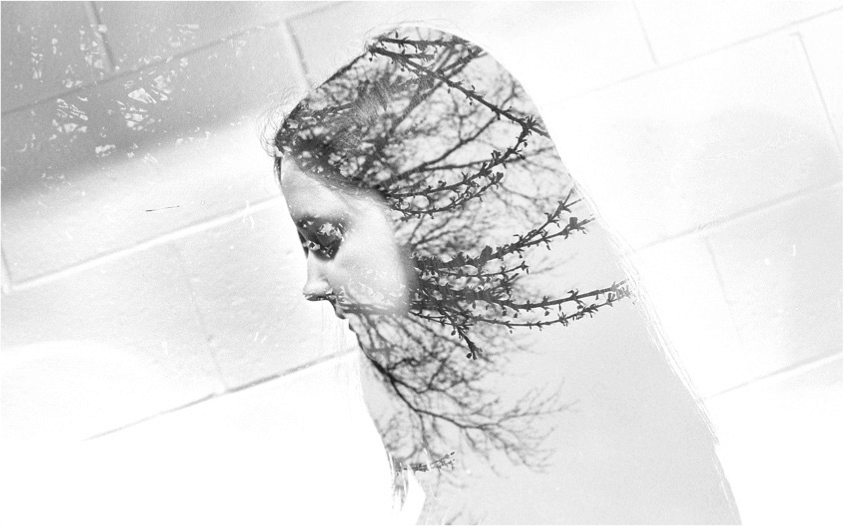
Created by exposing two layers of film simultaneously - you can see again that the light areas are subtractive and the dark areas are additive.
Multiple exposures,
Film,
2016